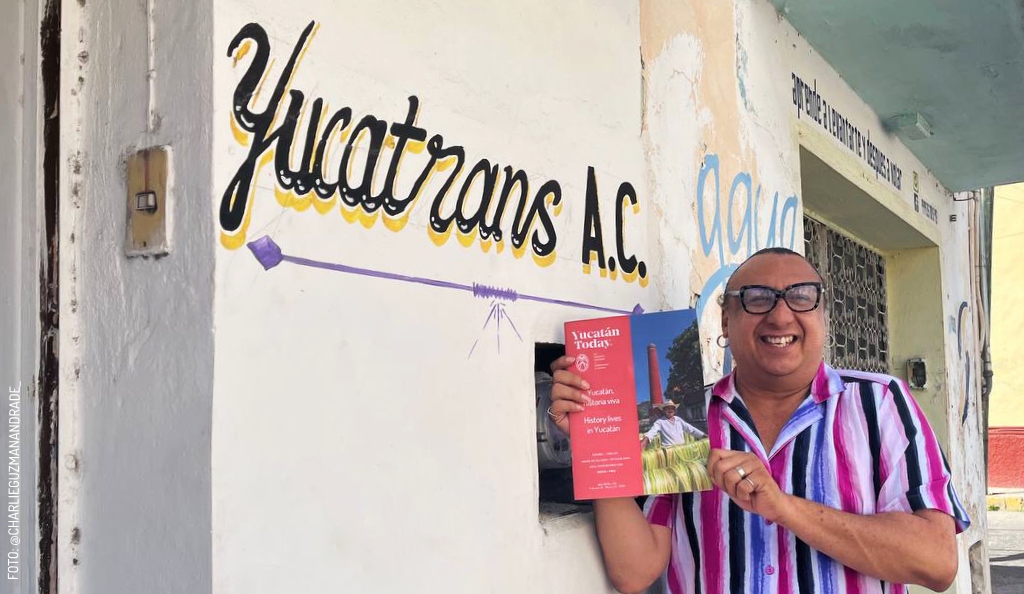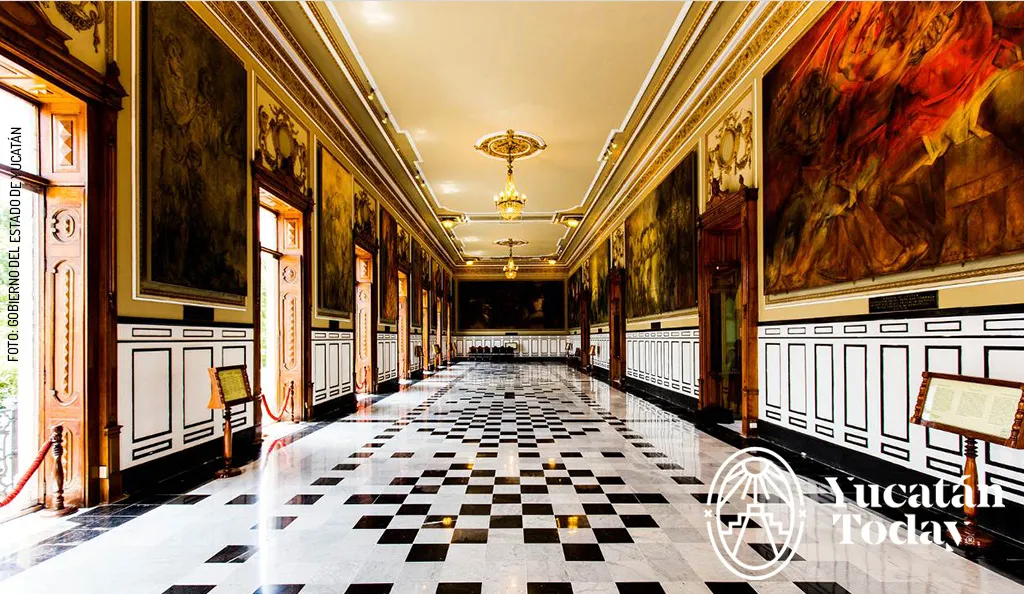The visual artists of México include a renowned Yucatecan, Fernando Castro Pacheco, author of the 27 murals that you can see in the Yucatán state governor’s palace (Palacio de Gobierno) on Calle 61 at 60, Centro. They describe important moments in the history of the region, of the Maya, and of other important people in our history.
Castro Pacheco was born in Mérida in 1918 and died in the same city in 2013. With training in visual arts, he also evolved as a sculptor, engraver, and illustrator. He was the director of the Escuela de Escultura, Pintura y Grabado “La Esmeralda” (sculpture, painting and engraving school). He participated in what is known as the Mexican realism school, one of the most important art movements in Mexico; later in murals, in which his work stands out for its extraordinary use of color, light and shadow. His work has been admired in various cities in the USA, Japan, Europe, and Latin America. For his tremendous trajectory and contribution he has received numerous awards and recognitions.
Castro Pacheco is widely known for the murals he was commissioned to paint in the 1970s and which can be seen on the walls of the governor’s palace at the foot of the main staircase, in the Salón de la Historia (history salon), en el Salón de los Retratos (portrait salon), and in the upper and lower hallways. Some of the most important murals are “Evolución social del hombre en Yucatán” (social evolution of Man in Yucatán), “La Lucha eterna de México” (the eternal struggle of México), “Cosmogonía maya I, II y III” (Maya cosmogony), “El suplicio de Jacinto Canek” (the torture of Jacinto Canek), “El triunfo de la República” (the triumph of the republic), “El henequén”, “Venta de indios” (sale of Indians) and “Guerra de Castas” (the Caste War), among others. In these murals you will be able to observe elements that express Maya symbolism and social injustice including indigenous oppression during the height of the henequen industry in Yucatán.
If you have not yet had a chance to see these works, we suggest you set aside a morning to tour the building and also look for the portraits of notable Yucatecans, including Quintana Roo, Benito Juárez, Felipe Carrillo Puerto and Salvador Alvarado, all of whom were painted by Castro Pacheco.
MACAY Museum (Calle 60 x 61 y 63, Centro, beside the Cathedral) has a salon dedicated to him with a permanent exhibit.
Fernando Castro Pacheco did not cease producing artwork during his lifetime and up until shortly before his death, leaving behind an artistic legacy in drawings, watercolors, oil paintings, and sculptures of great quality, making him one of Mexico’s most outstanding visual artists. Don’t miss the chance to see the works of this great Yucatecan artist during your stay in Mérida.

Author: Violeta H. Cantarell
“Meridana,” traveler, animal lover, passionate reader, commentator, and enthusiastic promoter of the natural and human beauty of Yucatán.
¡Receive the latest articles and much more from the best of Yucatán in your email!
Related articles

Stray Animals in Yucatán
Many visitors to Yucatán are dismayed by the numbers of stray dogs and cats on the streets. As there is no official government-operated Humane...
Golf Club of Yucatán
Nestled in the jungle of the Yucatán on what was once the grounds of Dzibilchaltún, is the Golf Club of Yucatán. Open seven days a week with 18 holes...





